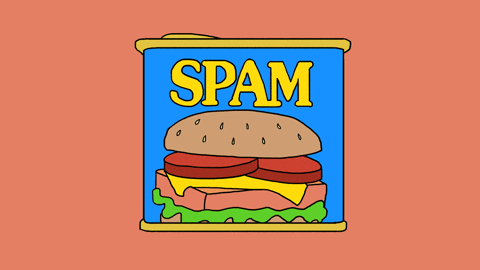Year of the Pig 2019
by Kenneth Lyen


PIG PERSONALITY
According to the Chinese Zodiac, the pig is the last animal in the 12-year cycle, which means that it was beaten in the race by 11 other animals. In China, pigs are not considered to be terribly smart, and they are definitely not great athletes. They have an excessive appetite and fall asleep easily, and hence they gain weight and become somewhat obese. On the positive side, they are friendly, easy-going, courteous and considerate. They are tolerant, kind, generous, and loyal to their friends and loved ones. They are honest, hard-working, trustworthy and are persistent in working out problems. They can bring affluence to their friends and hence they are associated with wealth.

PIG JOKES
Every year, the new zodiac animal instigates a round of jokes, which after while, the humor dissipates. Here are some of the exhausted overworked idioms that have become boaring.

HOW DOCTORS VIEW PIGS
Like some of my doctor friends, we have a somewhat bizarre, perhaps even perverse, way of looking at life, the universe, and everything. Pork is one of the most consumed meat worldwide. However, I have always wondered why middle eastern countries do not eat pork. Here are some of the points I have considered:


INFECTIONS
a) Parasitic Infections:
Pigs carry parasites such as roundworms, whipworms, hookworms, tapeworms, and toxoplasmosis;


b) Food Poisoning Bacteria: These include salmonella and yersinia;


c) Viruses: There are several viruses transmitted from pigs, including hepatitis E and the notorious swine flu

LIVER CANCER
There is epidemiological correlation between pork consumption and liver cancer. Nitrosamines are suspected as a possible chemical that causes the cancer, but it has not been proven. There is also some suggestion that eating pork may be related to colon cancer.



MULTIPLE SCLEROSIS (MS)
There is a correlation between eating pork and the neurological condition multiple sclerosis. This is an autoimmune condition when one’s immune system is attacking the body. Symptoms are variable, and may consist of eye problems such as blurred vision, numbness and tingling of the fingers and toes, painful muscle spasms in the legs, speech problems such as slurred speech, difficulty thinking and concentration, tremors and shaking of the hands, difficulty walking, weakness and tiredness. Although there is much speculation as to the mechanism as to how pork consumption might lead to multiple sclerosis, this is being researched.


CHOLESTEROL-RELATED PROBLEMS
Chinese crispy pork, barbecued pork (char siu), pork jerky (bak kwa), fatty pork, bacon, ham, contain saturated fats. Eating a lot of fatty pork can raise one’s cholesterol level, and this can cause high blood pressure, heart attacks and strokes.
Could it be that the middle eastern people in the distant past who recommended avoiding pork may have anticipated all these diseases and prevented them occurring?

CHINESE PORK DISHES
Above are a sample of the popular Chinese pork dishes. How to resist?

WORDS WORDS WORDS
Over the years, the words pig, swine and hog have evolved to have an additional meanings over and above describing the animal. We use them as insults to imply gluttony, selfishness, filth, domineering, scoundrel, etc.
Pig: A pig is any of the animals in the genus Sus, within the even-toed ungulate family Suidae. Pigs include the domestic pig and its ancestor, the common Eurasian wild boar, along with other species. (Wikipedia) The scientific name for the pig is Sus scrofa scrofa. Pigs are mammals with stocky bodies, flat snouts that can move independently of their heads, small eyes and large ears. They are highly intelligent, social animals, and are found all over the world. (Live Science). The pig was domesticated from the wild boar some 9000 years ago.
Pork: The word is derived from Old French porc, and the Latin porcus ‘pig’. Pork is the culinary name for meat from domesticated form of pig (Sus scrofa domesticus). It is the most commonly consumed meat worldwide, with evidence of pig husbandry dating back to 5000 BC. Pork is eaten both freshly cooked and preserved
Swine: Derived from Old English swīn, Proto-Germanic *sweina- Now it carries a derogatory meaning embracing offensive behavior and no sense of decency.
Sow: A female swine, from Old English sāwan, of Germanic origin; related to Dutch zaaien and German säen
Hog: From Old English hogg, hocg, perhaps of Celtic origin and related to Welsh hwch and Cornish hoch ‘pig, sow’. A hog often means a domestic pig that weighs more than 120 lbs. (54 kilograms).
Boar: Old English bār, of West Germanic origin; related to Dutch beer and German Bär. A boar is an uncastrated male domestic pig, but it also means a wild pig of any gender.

PIG SPEAK
Several sounds are ascribed to pigs. They include oink, squeal, grunt and snort.
If we had a google translator, we might be able to discern what they are trying to tell us. Here’s what Mini Pig Info says:
Grunting: Usually the noise a mother pig makes when feeding her young. There are loud grunts and soft grunts. Each has a different meaning.
Barking: A warning of danger nearby; alternatively, this can mean your pig is having fun.
Squealing: A sign of anticipation (usually when about to be fed) or a sign of pain.
A quiet, hot panting: Usually the pigs way of saying “hello” or being friendly, we interpret this as a pigs way of saying I love you.
A rough coughing noise: Usually means your pig is annoyed about something.


THE EVOLUTION OF SPAM
The luncheon meat spam was one of my favorite childhood pork foods. It was born in 1937 as tin of cooked ham. It gained in popularity during the second world war because of the need to ship cooked meat to the soldiers, meat that did not spoil easily. Spam continues to be popular to this day, and in 2012, the eighth billion tin of spam was sold.


In 1970, the popular British television writers of the comedy Monty Python series wrote a sketch in which a group of rowdy Vikings sing a song about spam, drowning out the restaurant. Later in the final episode of Monty Python’s Flying Circus, spam was served to everyone, and the word spam was inserted into food items as well as the names of the entire creative team. In fact spam was mentioned 132 times. As a result, the word spam was taken to imply the drowning out of conversation.


In the 1980s, the internet was in its infancy, and most postings were on bulletin boards, like Usenet. There was already excessive multiple postings on these internet forums, tending to drown out other people’s postings. The coining of the word spam to mean the sending of unsolicited messages is attributed to the software trainer Joel Furr.
Nowadays the internet, emails and social media have become firmly embedded into our lives. We are living up in the web cloud. Are we safe? Maybe, but we need to take precautions. Virtually all computer operating systems and emails have an inbuilt spam filter. While they may not be perfect, they have protected many of us from annoying emails.
Finally, let's come back down to earth, back to the Year of the Pig!

CELEBRATING THE YEAR OF THE PIG
As we say goodbye to the year of the dog, we welcome the pig, and we hope that this year will bring peace and prosperity to all. Happy Chinese New Year!
Written by Kenneth Lyen
5 February 2019, updated 28 April 2020

SELECTED REFERENCES
Wikipedia: https://en.wikipedia.org/wiki/Pork
Diseases associated with eating pork
https://www.healthline.com/nutrition/is-pork-bad#section2
Pig Sounds: https://www.minipiginfo.com/mini-pig-sounds-101.html

